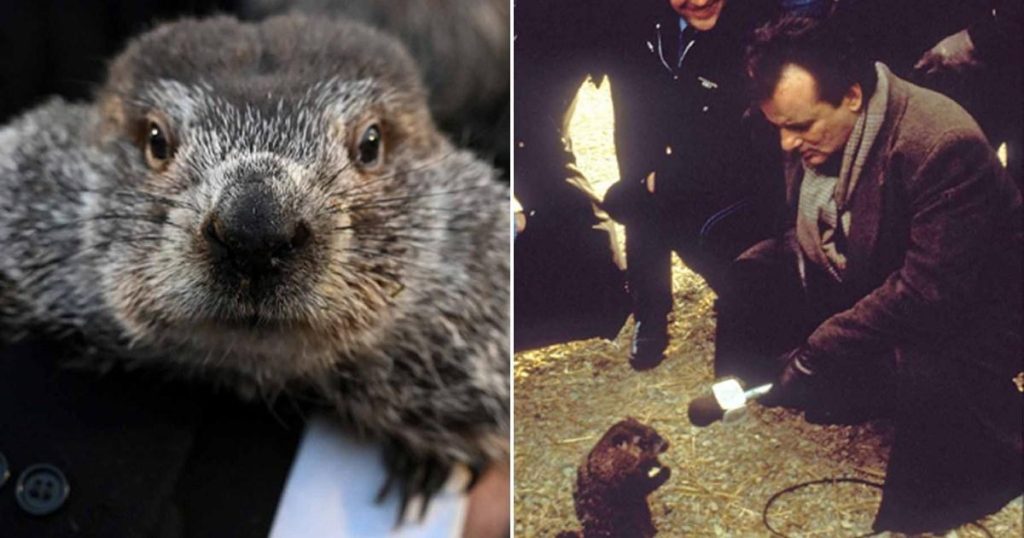Groundhog Day, an annual tradition observed on February 2nd, originates from the folklore of the Pennsylvania Dutch, a culturally rich group with German heritage residing in the US and Canada. Their unique traditions include a captivating superstition linking a groundhog’s sighting of its shadow to the duration of winter. According to this belief, if a groundhog, also known as a woodchuck, emerges from its burrow on February 2nd and sees its shadow, winter’s icy grip will persist for six more weeks. Conversely, if the groundhog doesn’t see its shadow, spring’s gentle arrival is anticipated earlier than usual. While similar traditions involving hibernating animals exist globally, the Pennsylvania Dutch version holds the most widespread recognition, captivating audiences across North America. On this day, communities gather to witness the groundhog’s emergence and interpret its behavior, creating a shared experience steeped in folklore and anticipation.
At the heart of Groundhog Day celebrations lies Punxsutawney Phil, the most celebrated groundhog prognosticator. Residing in the Pennsylvania town of Punxsutawney, from which he derives his name, Phil is revered as the town’s official weather-predicting groundhog. According to his keepers, Phil boasts a remarkable lifespan of around 140 years, adding an air of mystique to his pronouncements. Each February 2nd, Phil emerges from his burrow at Gobbler’s Knob, engaging in a whispered exchange with a distinguished figure dressed in a top hat and tails. This privileged individual, known as the president of the Inner Circle, is entrusted with deciphering Phil’s pronouncements, delivered in a cryptic language known as “Groundhogese,” which reveals whether Phil has seen his shadow. The President then announces Phil’s prediction to an eagerly awaiting crowd, marking a pivotal moment in the Groundhog Day festivities.
The 1993 film “Groundhog Day,” starring Bill Murray, catapulted this quaint tradition into the global spotlight. The film’s comedic portrayal of a cynical weatherman, Phil Connors, trapped in a time loop reliving February 2nd in Punxsutawney, introduced the tradition to a wider audience. Connors’ initial disdain for the event transforms as he’s forced to repeatedly experience the day, eventually finding personal growth and embracing the community spirit of Groundhog Day. This cinematic portrayal not only popularized the tradition but also added a layer of philosophical reflection on the nature of time, self-improvement, and community.
The film’s enduring popularity has further solidified Groundhog Day as a cultural touchstone, inspiring renewed interest in the Pennsylvania Dutch tradition. The town of Punxsutawney has become a pilgrimage site for fans of the film and those intrigued by the unique celebration. The annual event attracts visitors from around the world, eager to witness Phil’s prediction and partake in the festivities. Beyond the lighthearted spectacle, the tradition underscores the human fascination with predicting the future and finding meaning in cyclical events.
The enduring appeal of Groundhog Day lies in its blend of folklore, community, and the whimsical notion of a weather-predicting groundhog. The tradition offers a moment of collective anticipation and shared experience, bringing people together in a lighthearted celebration. While the scientific accuracy of Phil’s predictions remains a subject of playful debate, the event’s true value lies in its ability to foster community spirit and provide a welcome respite from the winter doldrums. The tradition’s enduring popularity speaks to the human desire for connection, shared experiences, and a touch of whimsical folklore in an increasingly complex world.
Whether viewed as a quirky tradition, a philosophical exploration of time, or a charming community event, Groundhog Day continues to capture the imagination. From its humble origins in Pennsylvania Dutch folklore to its global recognition through popular culture, the tradition has evolved into a multifaceted celebration. The annual emergence of Punxsutawney Phil serves as a reminder of the enduring power of folklore, the importance of community, and the simple joy of embracing a whimsical tradition.


